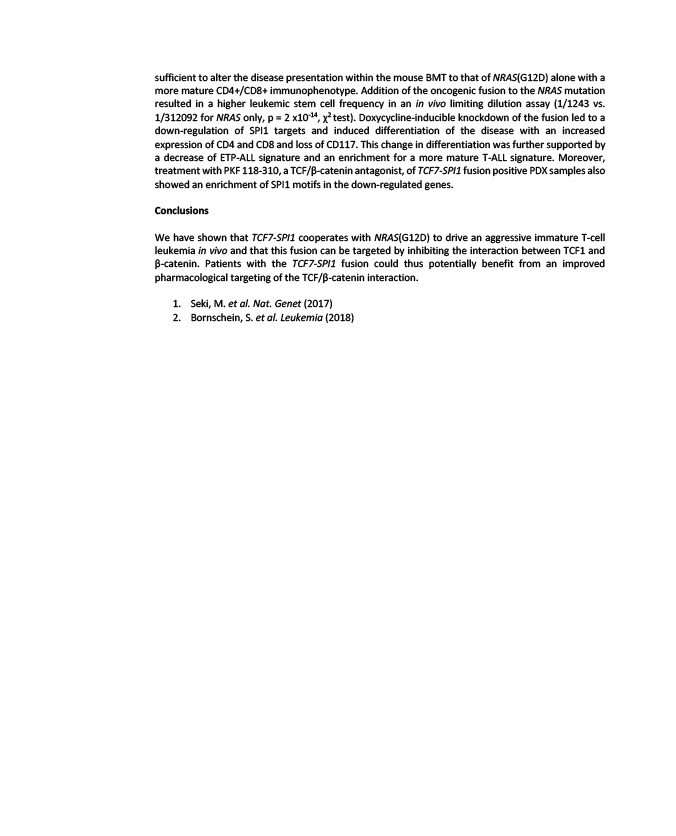
sufficient to alter the disease presentation within the mouse BMT to that of NRAS(G12D) alone with a
more mature CD4+/CD8+ immunophenotype. Addition of the oncogenic fusion to the NRAS mutation
resulted in a higher leukemic stem cell frequency in an in vivo limiting dilution assay (1/1243 vs.
1/312092 for NRAS only, p = 2 x10-14, χ2 test). Doxycycline-inducible knockdown of the fusion led to a
down-regulation of SPI1 targets and induced differentiation of the disease with an increased
expression of CD4 and CD8 and loss of CD117. This change in differentiation was further supported by
a decrease of ETP-ALL signature and an enrichment for a more mature T-ALL signature. Moreover,
treatment with PKF 118-310, a TCF/β-catenin antagonist, of TCF7-SPI1 fusion positive PDX samples also
showed an enrichment of SPI1 motifs in the down-regulated genes.
Conclusions
We have shown that TCF7-SPI1 cooperates with NRAS(G12D) to drive an aggressive immature T-cell
leukemia in vivo and that this fusion can be targeted by inhibiting the interaction between TCF1 and
β-catenin. Patients with the TCF7-SPI1 fusion could thus potentially benefit from an improved
pharmacological targeting of the TCF/β-catenin interaction.
1. Seki, M. et al. Nat. Genet (2017)
2. Bornschein, S. et al. Leukemia (2018)